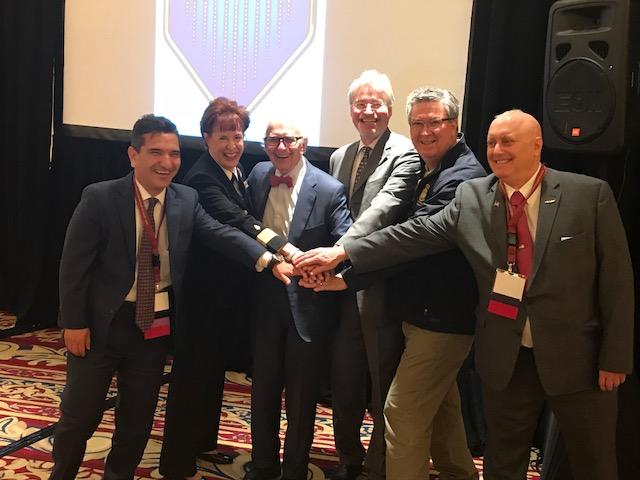In the worlds of technology and investing, the term “Valley of Death” is just as discouraging as it sounds.
The commonly used moniker refers to what all-too-commonly happens to startups: they die before enough money flows in to make their business sustainable.
At the 15th World Congress for Brain Mapping & Therapeutics earlier this month, the Minority Business Development Agency addressed the problem in a panel titled “Bridging the Valley of Death with Federal and Non-Federal Funding.”
The discussion – co-moderated by Patricia Tomczyszyn, MBDA’s Inclusive Innovation Program Manager, and Julio Cassels, a Miami-based business consultant – proved to be one of the most enlightening talks in a weekend filled with highlights.
With a rapt audience of mostly researchers and neuroscientists at the Biltmore Hotel in Los Angeles, Tomczyszyn and Cassels detailed the many government-funded opportunities those scientists could be afforded – assistance that might prove integral in the development of their products and therapies.
The audience, Tomczyszyn said, was looking for data – particularly from research work at federal laboratories and other federal funded research. The panel noted that the government also needs data from those thoroughly engaged researchers in attendance.
Dr. Jennifer Fogarty, Chief Scientist for the NASA Human Research Program, explained that the Space Act of 1958 authorizes the Agency into Space Act Agreements with non-federal entities to accomplish its mission. For example, the amount of information needed for the planned mission to Mars in 2030 exceeds what NASA can generate. That’s where researchers and scientists in the private sector come into play. They just need to know what funding is out there and how to best apply for it.
“They were starving for that information,” Tomczyszyn said. “A lot of them are affiliated with universities. The big thing would be for them to come to MBDA to find businesses to partner with and to get government grants.”
Much of the research that federal laboratories fund is through universities, though there are plenty of individual entrepreneurs and small companies that the agency also supports. MBDA points many researchers and scientists – like the ones in attendance at the Biltmore last weekend – toward the Small Business Innovation Research (SBIR) and Small Business Technology Transfer (STTR) programs.
For the STTR program, minority business enterprises are required to work with a university to develop new products. MBDA’s panel featured compelling anecdotes on such relationships from Eric Gosink of Loma Linda University, which supports about eight startups per year.
Other contributors to the panel were: Frank Vassallo, an MBDA Inclusive Innovation Ambassador and Co-founder of SparkOFF, LLC; Janeya Griffin of the Federal Laboratory Consortium, Jasson Crockett, Office of Los Angeles Mayor Eric Garcetti; and Patent Attorney Kristin Smith.
Tomczyszyn wasn’t the only Commerce Department representative at the World Congress for Brain Mapping & Therapeutics last weekend. She was joined by Ron Uba, a Business Development Specialist with MBDA, and Dr. Walter G. Copan, Commerce Undersecretary for Standards and Technology, and Director of the National Institutes of Standards & Technology (NIST).
Copan delivered a keynote address that informed attendees about his recently launched ROI Initiative to “unleash American innovation” by assessing and enhancing the effectiveness of federal innovation policies and tools. The ROI Initiative will result in new mechanisms and approaches to U.S. innovation, commercialization, and partnerships.
The ROI Initiative will be especially important to university researchers looking to commercialize new technologies. Getting technology out of the laboratory and into the market is arduous and cost-prohibitive; a time-consuming process that most startups and small businesses simply cannot afford. Technologies being licensed today may have been first developed decades ago. Also complicating matters is the hesitancy of businesses to share with the Federal Government exactly what is being developed by licensees of federal technology.
Under Copan’s direction, the ROI Initiative will seek to address those issues, streamlining the process and accelerating tech transfer. The ultimate goal will be more private sector investment and more government-aided innovation. Dr. Copan also shared information about brain-related research at the NIST laboratories in Colorado and Maryland to:
- Reduce occurrences of traumatic brain injury,
- Improve quantitative medical imaging,
- advanced high-tech computing, and
- to make brain mapping more accessible.
For more information about MBDA’s Inclusive Innovation Initiative, click here.
Posted at 12:46 PM



